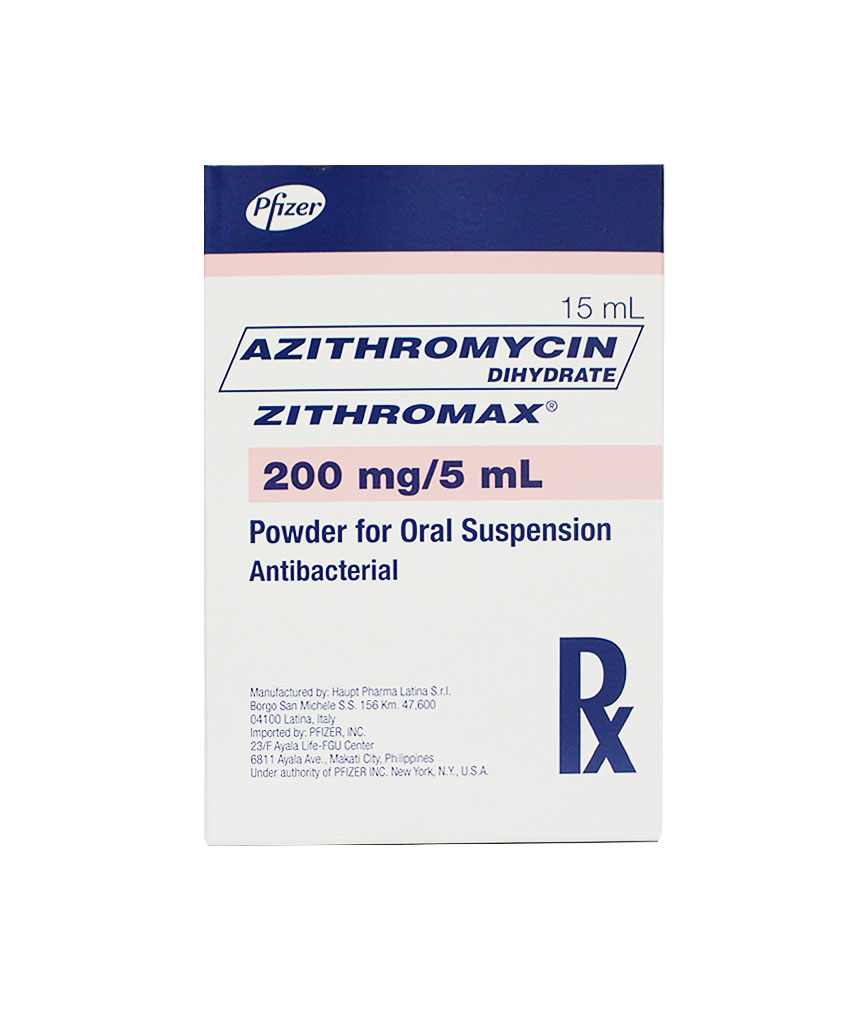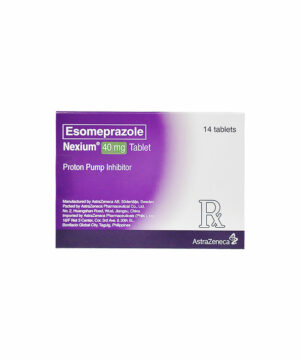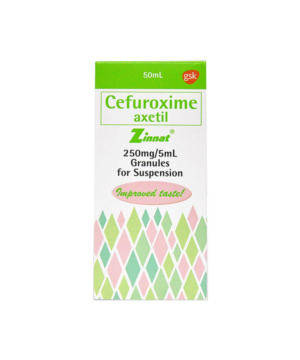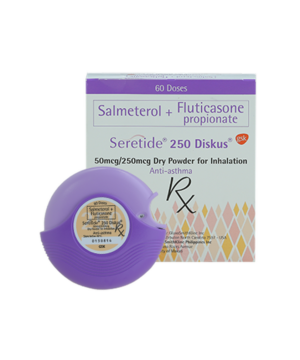Description
Zithromax 200Mg Suspension 15Ml
Description :
Each film-coated tablet 250 mg and 500 mg contains azithromycin dihydrate equivalent to azithromycin 250 mg and 500 mg, respectively.
Each 5 mL of powder for oral suspension, when reconstituted as directed, contains azithromycin dihydrate equivalent to azithromycin 200 mg. On reconstitution with water, off-white to orange to brown suspension.
Each vial contains azithromycin 500 mg as dihydrate providing 100 mg/mL solution following recommended reconstitution.
Azithromycin has the chemical name (2R,3S,4R,5R,8R,10R,11R,12S,13S,14R)-13-[(2,6-dideoxy-3-C-methy-l3-O-methyl-a-L-ribo-hexopyranosyl) oxy]-2-ethyl-3,4,10-trihydroxy -3,5,6,8,10,12,14-hepta- methyl-11-[[3,4,6-trideoxy-3-(dimethylamino) -?-D-xylo-hexopyranosyl]-oxy]-1-oxa-6-azacyclopentadecan-15-one. Azithromycin is derived from erythromycin; however, it differs chemically from erythromycin in that a methyl-substituted nitrogen atom is incorporated into the lactone ring. Its molecular formula is C38H72N2O12, and its molecular weight is 749.00.
Azithromycin, as the dihydrate, is a white crystalline powder with a molecular formula of C38H72N2O12?2H2O and a molecular weight of 785.
Excipients/Inactive Ingredients: Tablet: Pregelatinized starch, anhydrous dibasic calcium phosphate, croscarmellose sodium, magnesium stearate and sodium lauryl sulfate. The film-coating contains hydroxypropylmethylcellulose, triacetin and titanium dioxide (E171).
Suspension: Sucrose (1.94 g/100-mg dose), anhydrous tribasic sodium phosphate, hydroxypropyl cellulose, xanthan gum, artificial cherry, creme de vanilla and banana flavors.
I.V.: Citric acid (anhydrous) 384.6 mg and sodium hydroxide 198.3 mg.
ZITHROMAX 200MG SUSP 15ML-MDRP
Indications / Uses :
Azithromycin is indicated for infections caused by susceptible organisms; in lower respiratory tract infections including bronchitis and pneumonia, in skin and soft tissue infections, in acute otitis media and in upper respiratory tract infections including sinusitis and pharyngitis/tonsillitis. (Penicillin is the usual drug of choice in the treatment of Streptococcus pyogenes pharyngitis, including the prophylaxis of rheumatic fever. Azithromycin is generally effective in the eradication of streptococci from the oropharynx however, data establishing the efficacy of azithromycin and the subsequent prevention of rheumatic fever are not available at present).
In sexually transmitted diseases in men and women, azithromycin is indicated in the treatment of uncomplicated genital infections due to Chlamydia trachomatis. It is also indicated in the treatment of chancroid due to Haemophilus ducreyi and uncomplicated genital infections due to non-multiresistant Neisseria gonorrhoeae; concurrent infection with Treponema pallidum should be excluded.
Azithromycin is indicated, either alone or in combination with rifabutin, for prophylaxis against Mycobacterium avium-intracellulare complex (MAC) infection, an opportunistic infection prevalent in patients with advanced human immunodeficiency virus (HIV). Azithromycin is indicated in combination with ethambutol for the treatment of disseminated MAC (DMAC) infection in patients with advanced HIV infection.
Azithromycin intravenous (IV) is indicated for the treatment of community-acquired pneumonia (CAP) caused by susceptible organisms, including Legionella pneumophila, in patients who require initial intravenous (IV) therapy.
Azithromycin intravenous (IV) is indicated for the treatment of pelvic inflammatory diseases (PID) caused by susceptible organisms (Chlamydia trachomatis, Neisseria gonorrhoea, Mycoplasma hominis), in patients who require initial intravenous (IV) therapy.
Administration :
May be taken with or without food: May be taken w/ meals to reduce GI discomfort.
Contraindications :
The use of this product is contraindicated in patients with a hypersensitivity to azithromycin, erythromycin, any macrolide or ketolide antibiotic, or to any excipient listed as follows: Suspension: Sucrose (1.94 g per 100 mg dose), sodium phosphate tribasic anhydrous, hydroxypropyl cellulose, xanthan gum, artificial cherry, creme de vanilla and banana flavors.
Tablets: Pregelatinized starch, calcium phosphate dibasic anhydrous, croscarmellose sodium, magnesium stearate and sodium lauryl sulfate. The film coating contains hydroxypropyl methylcellulose, triacetin and titanium dioxide (E171).
Powder for Intravenous Solution: Citric acid (anhydrous) 384.6 mg, and sodium hydroxide 198.3 mg
Special Precautions :
Hypersensitivity: As with erythromycin and other macrolides, rare serious allergic reactions, including angioedema and anaphylaxis (rarely fatal), and dermatologic reactions including Stevens-Johnson Syndrome (SJS), Toxic Epidermal Necrolysis (TEN) (rarely fatal), and Drug Reaction with Eosinophilia and Systemic Symptoms (DRESS) have been reported. Some of these reactions with azithromycin have resulted in recurrent symptoms and required a longer period of observation and treatment.
If an allergic reaction occurs, the drug should be discontinued and appropriate therapy should be instituted. Physicians should be aware that reappearance of the allergic symptoms may occur when symptomatic therapy is discontinued.
Hepatotoxicity: Since liver is the principal route of elimination for azithromycin, the use of azithromycin should be undertaken with caution in patients with significant hepatic disease.
Abnormal liver function, hepatitis, cholestatic jaundice, hepatic necrosis, and hepatic failure have been reported, some of which have resulted in death. Discontinue azithromycin immediately if signs and symptoms of hepatitis occur.
Ergot Derivatives: In patients receiving ergot derivatives, ergotism has been precipitated by coadministration of some macrolide antibiotics. There are no data concerning the possibility of an interaction between ergot and azithromycin. However, because of the theoretical possibility of ergotism, azithromycin and ergot derivatives should not be co-administered.
Superinfection: As with any antibiotic preparation, observation for signs of superinfection with non-susceptible organisms, including fungi is recommended.
Clostridium Difficile-Associated Diarrhea: Clostridium difficile associated diarrhea (CDAD) has been reported with the use of nearly all antibacterial agents, including azithromycin, and may range in severity from mild diarrhea to fatal colitis. Treatment with antibacterial agents alters the normal flora of the colon, leading to overgrowth of C. difficile.
C. difficile produces toxins A and B, which contribute to the development of CDAD. Hypertoxin-producing strains of C. difficile cause increased morbidity and mortality, as these infections can be refractory to antimicrobial therapy and may require colectomy. CDAD must be considered in all patients who present with diarrhea following antibiotic use. Careful medical history is necessary since CDAD has been reported to occur over 2 months after the administration of antibacterial agents.
Renal Impairment: In patients with severe renal impairment (GFR <10 mL/min), a 33% increase in systemic exposure to azithromycin was observed (see Pharmacology: Pharmacokinetics under Actions).
Diabetes: Azithromycin 40 mg/mL Powder for Oral Suspension: Caution in diabetic patients: 5 mL of reconstituted suspension contains 3.87 g of sucrose.
Due to the sucrose content (3.87 g/5 mL of reconstituted suspension), this medicinal product is not indicated for persons with fructose intolerance (hereditary fructose intolerance), glucose-galactose malabsorption or saccharase-isomaltase deficiency.
Prolongation of the QT Interval: Prolonged cardiac repolarization and QT interval, imparting a risk of developing cardiac arrhythmia and torsades de pointes, have been seen in treatment with macrolides, including azithromycin(see Adverse Reactions). Prescribers should consider the risk of QT prolongation, which can be fatal when weighing the risks and benefits of azithromycin for at-risk groups including: Patients with congenital or documented QT prolongation.
Patients currently receiving treatment with other active substances known to prolong QT interval such as antiarrhythmics of classes IA and III, antipsychotic agents, antidepressants, and fluoroquinolones.
Patients with electrolyte disturbance, particularly in cases of hypokalemia and hypomagnesemia.
Patients with clinically relevant bradycardia, cardiac arrhythmia or cardiac insufficiency.
Elderly Patients: Elderly patients may be more susceptible to drug-associated effects on the QT interval.
Intravenous Administration: Azithromycin for injection should be reconstituted and diluted as directed and administered as an intravenous infusion over not less than 60 minutes. Do not administer as an IV bolus or an intramuscular injection (see Dosage & Administration and Caution for Usage).
Effects on Ability to Drive and Use Machines: There is no evidence to suggest that azithromycin may have an effect on a patient’s ability to drive or operate machinery.














Reviews
There are no reviews yet.